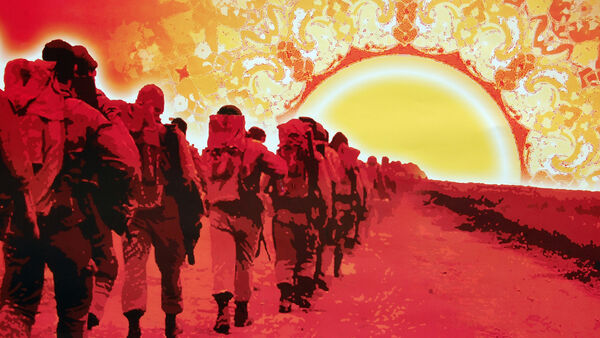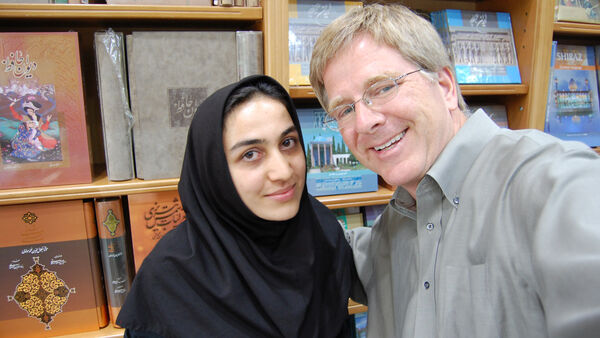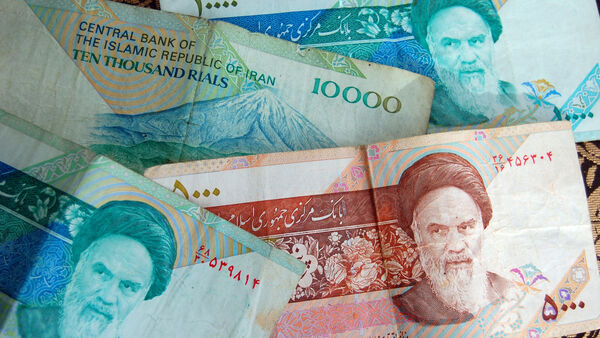Iran Travel Journal (part 3)





No Credit Cards, Alcohol…or Urinals
Traveling through Iran, my notebook quickly fills with quirky observations. Reading the comments readers share on my blog (some of whom are upset with me for "naively" trying to understand "our enemy") is thought-provoking. The whole experience makes me want to hug people and scream at the same time. It's intensely human.
One moment, I'm stirred by propaganda murals encouraging young men to walk into the blazing sunset of martyrdom. The next, a woman in a bookstore serves me cookies while I browse, then gives me free of charge a book I admired.
While English is the second language on many signs, there is a substantial language barrier. The majority of Iranians (a little more than half) are Persian. Persians are not Arabs, and they don't speak Arabic — they speak Farsi. This Persian/Arab difference is a very important distinction to the people of Iran. My film crew and I hear over and over again, "We are not Arabs!"
The squiggly local script looks like Arabic to me, but I learned that, like the language, it's Farsi. The numbers, however, are the same as those used in the Arab world. Thankfully, when I needed it, I found that they also use "our" numbers.
Iran is a cash society. Because of the 26-year-old American embargo here, Western credit cards don't work. No ATMs for foreigners means that we had to bring in big wads of cash...and learn to count carefully. The money comes with lots of zeros. One dollar is equal to 10,000 rial. (If you exchange $100, you are literally a millionaire here.) A toman isten rial, and some prices are listed in rial, others in toman...a tourist rip-off just waiting to happen. I had a shirt laundered at the hotel for "20,000." Was that in rial ($2) — or in toman ($20)? Coins are rarely used, and there are no state-issued large bills. Local banks print large bills to help local commerce. To tell if a bill is counterfeit, you rub the number with your finger — if it's the real deal, the warmth makes the numbers momentarily disappear.
People here need to keep track of three different calendars: Persian and Islamic (for local affairs), and Western (for dealing with the outside world). What's the year? It depends: After Muhammad — about 1,430 years ago, or after Christ — 2,000 and some years ago.
Of course, the Islamic government legislates women's dress and public behavior. Men are also affected, to a lesser degree. Neckties are rarely seen, as they're considered the mark of a Shah supporter. And there are no urinals anywhere. (Trust me. I did an extensive search: at the airport, swanky hotels, the university, the fanciest coffee shops.) I was told that Muslims believe you don't get rid of all your urine when you urinate standing up. For religious reasons, they squat. I find this a bit time-consuming. In a men's room with 10 urinals, a guy knows at a glance what's available; in a men's room with 10 doors, you have to go knocking.
Our guide, Seyed, makes sure we're eating in comfortable (i.e., high-end) restaurants, generally in hotels. I wasn't wild about the food on my first trip here in 1978. It's much better now…but still not very exciting. (If French and Italian are the top cuisines in Europe, someone has to keep Norwegian cooking company at the bottom.)
Restaurants use facial tissue rather than napkins; there's a box of tissues on every dining table. Because Iran is a tea culture, the coffee at breakfast is always instant. Locals assure me that tap water is safe to drink, but I'm sticking with the bottled kind.
Iran is strictly "dry" — absolutely no booze or beer in public. While I keep ordering a yogurt drink (similar to Turkish ayran), local would-be beer-drinkers seem to fantasize: They drink a non-alcoholic "malt beverage" that tastes like beer and comes in a beer can.
I can't help but think how tourism could boom here if they just opened this place up. There are a few Western tourists (mostly Germans, French, Brits, and Dutch), but they all seem to be on a tour, with a private guide, or visiting relatives. Control gets tighter and looser depending on the political climate, but basically American tourists can visit only with a guided tour. I've met no one just exploring on their own. The Lonely Planet guidebook dominates — it seems every Westerner here has one. Fortunately, it's good. Tourists are so rare, and major tourist sights are so few and obvious, that you bump into the same people day after day. Browsing through picture books and calendars showing the same 15 or 20 images of the top sights in Iran, I'm impressed by how our short trip will manage to include most of them.
Clipped Wings and Conformity on Campus
I was excited to visit the University of Tehran, in hopes of filming highly educated and liberated women and an environment of freedom. I assumed that in Iran, as in most societies, the university would be where people run free...barefoot through the grass of life, leaping over silly limits just because they can.
But instead, the University of Tehran — the country's oldest, biggest, and most prestigious university — makes BYU look like Berkeley. Subsidized by the government, the U. of T. follows the theocracy's guidelines to a T: a strictly enforced dress code, no nonconformist posters, top-down direction for ways to play, segregated cantinas...and students toeing the line (in public, at least).
Hoping to film some interaction with students, I asked for a student union center (the lively place where students come together as on Western campuses). But there was none. Each faculty had a cantina where kids could hang out, with a sales counter separating two sections — one for boys and one for girls.
In the USA, I see university professors as a bastion of free thinking, threatening to people who enjoy the status quo. In Tehran, I found a situation where the theocracy was clearly shaping the curriculum, faculty, and tenor of the campus. Conformity on any university campus saddens me. But seeing it in Iran — a society which so needs some nonconformity — was the most disheartening experience of my whole trip.

